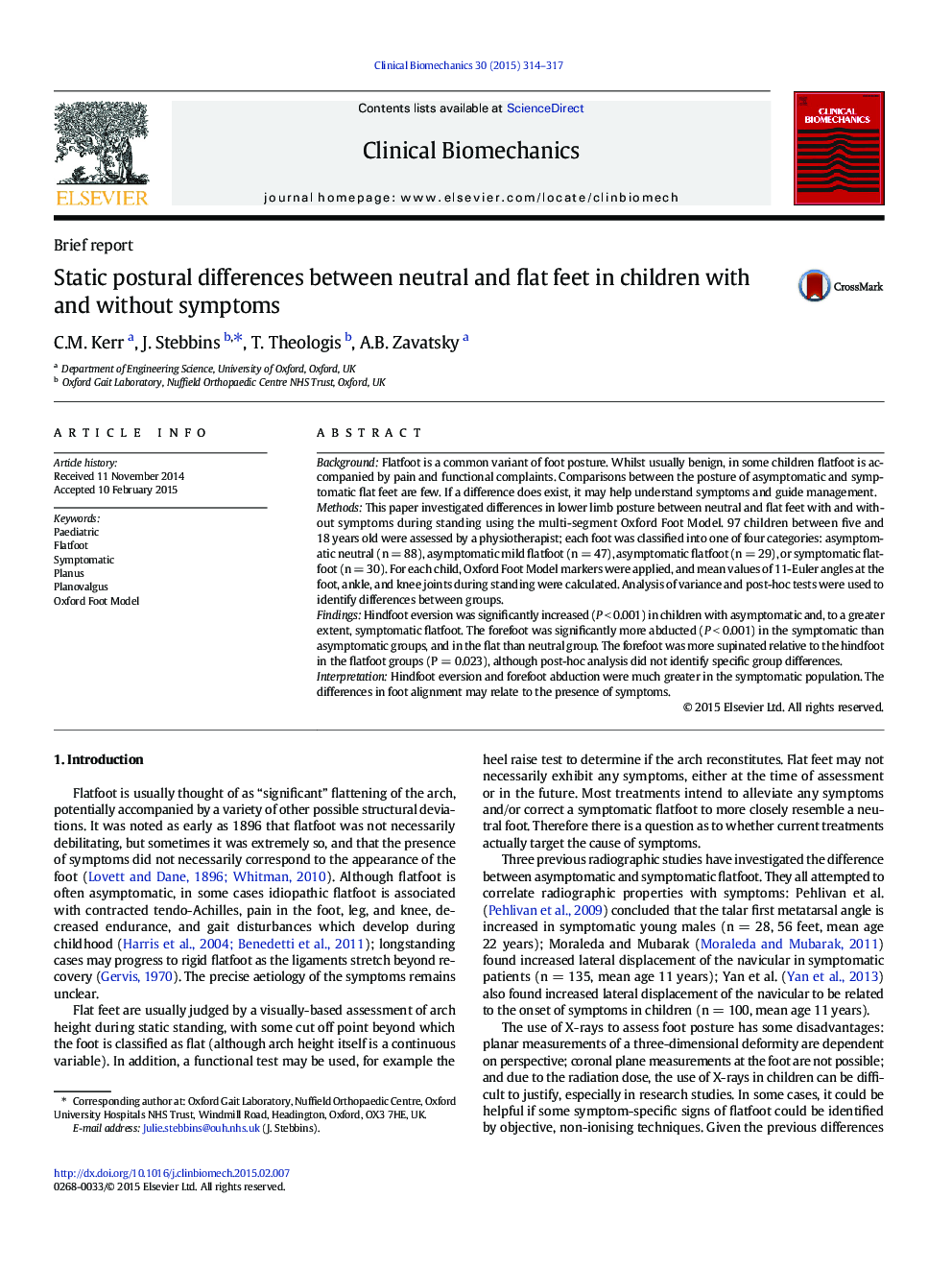| کد مقاله | کد نشریه | سال انتشار | مقاله انگلیسی | نسخه تمام متن |
|---|---|---|---|---|
| 6204738 | 1264914 | 2015 | 4 صفحه PDF | دانلود رایگان |
- Aim to find differences between asymptomatic and symptomatic flatfoot.
- Previously only a few radiographic studies have found differences.
- Oxford Foot Model marker-based assessment of 98 children.
- Hindfoot eversion, forefoot supination, and forefoot abduction larger in flatfoot.
- Forefoot abduction and hindfoot eversion increased in symptomatic cases.
BackgroundFlatfoot is a common variant of foot posture. Whilst usually benign, in some children flatfoot is accompanied by pain and functional complaints. Comparisons between the posture of asymptomatic and symptomatic flat feet are few. If a difference does exist, it may help understand symptoms and guide management.MethodsThis paper investigated differences in lower limb posture between neutral and flat feet with and without symptoms during standing using the multi-segment Oxford Foot Model. 97 children between five and 18 years old were assessed by a physiotherapist; each foot was classified into one of four categories: asymptomatic neutral (n = 88), asymptomatic mild flatfoot (n = 47), asymptomatic flatfoot (n = 29), or symptomatic flatfoot (n = 30). For each child, Oxford Foot Model markers were applied, and mean values of 11-Euler angles at the foot, ankle, and knee joints during standing were calculated. Analysis of variance and post-hoc tests were used to identify differences between groups.FindingsHindfoot eversion was significantly increased (P < 0.001) in children with asymptomatic and, to a greater extent, symptomatic flatfoot. The forefoot was significantly more abducted (P < 0.001) in the symptomatic than asymptomatic groups, and in the flat than neutral group. The forefoot was more supinated relative to the hindfoot in the flatfoot groups (P = 0.023), although post-hoc analysis did not identify specific group differences.InterpretationHindfoot eversion and forefoot abduction were much greater in the symptomatic population. The differences in foot alignment may relate to the presence of symptoms.
Journal: Clinical Biomechanics - Volume 30, Issue 3, March 2015, Pages 314-317
